Imagine a birding day that begins with a chill amid spectacular alpine scenery at almost 3,000 m and finishes in sultry coastal marshes, gradually descending through a myriad of wildlife-rich habitats as varied as verdant wooded valleys and arid lowland semi-desert.
It sounds too good to be true. Surely it's not possible to visit so many different ecological niches between sunrise and sunset? Well, in the Caucasian nation of Azerbaijan it is.
Such an assorted schedule is testament to the wealth of different habitats that this small country harbours. Small is the operative word: it's just 250 miles from Lankaran, close to the Iranian border in the south, to Quba, the gateway to the Azeri Greater Caucasus, which is about as far north as you can get without straying into Russia.
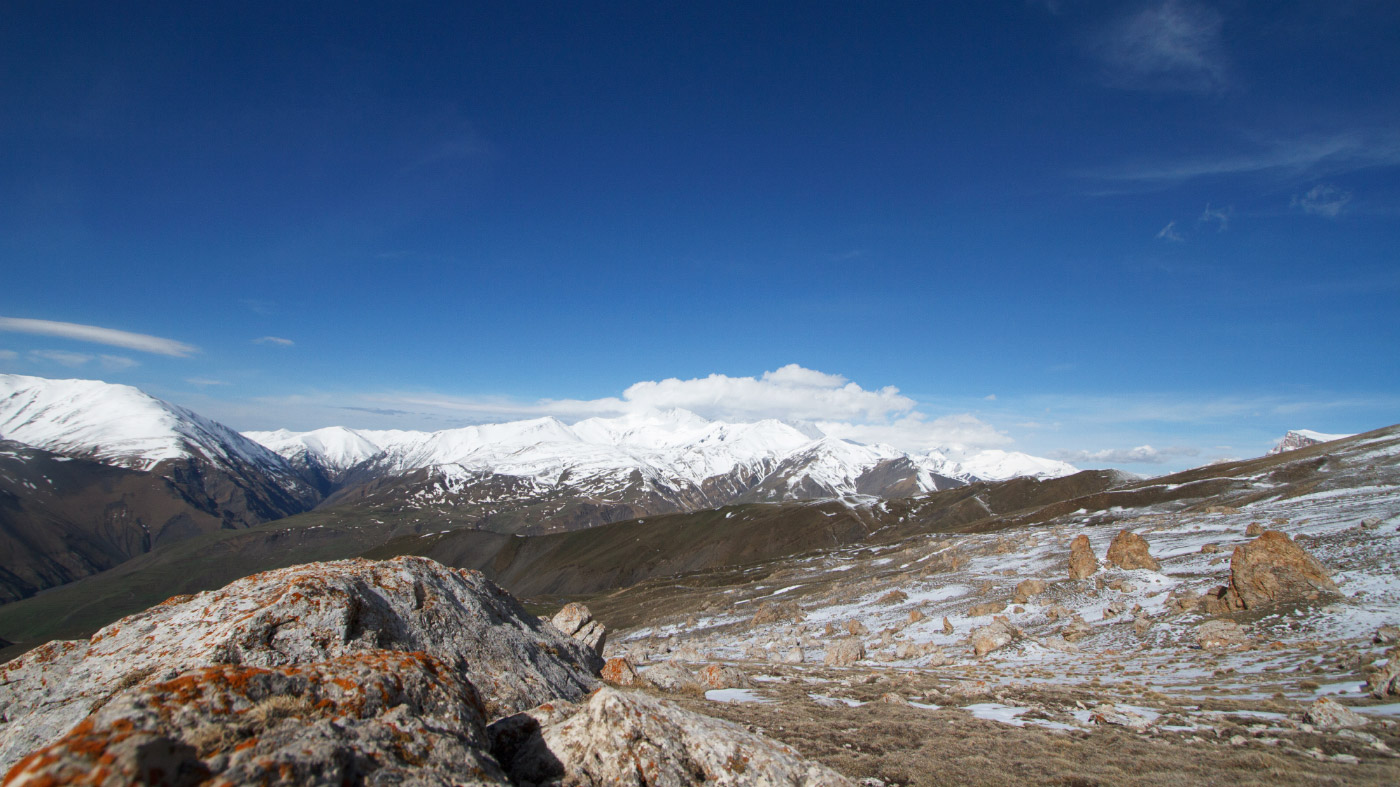
The high-mountain slopes of the Greater Caucasus support numerous special birds set among some of the most dramatic landscapes in the Western Palearctic (Josh Jones).
Best of both
Within the south-east Western Palearctic (WP), many are drawn to the appeal of neighbouring Georgia for its high-mountain Caucasian specialities, or Turkey for terrific all-round birding, but few realise that Azerbaijan – situated on the western shore of the Caspian Sea and at the very eastern edge of the WP – offers the best of both these destinations set among an array of epic landscapes, despite its diminutive size. Add to that a handful of breeding species found almost nowhere else in the WP, such as Shikra and Red-tailed Wheatear, and a visit sounds all the more tempting.
Rather like its peripheral position on the easternmost boundary of the WP, Azerbaijan remains a destination on the edge of many birders' radars, despite its obvious appeal. Despite there having been an upturn in visiting birders since 2010, as well as the establishment of a constant-effort watchpoint at the migration hot-spot of Besh Barmag, the country remains relatively unexplored. A perfect example of this is the range-restricted Caspian Tit, which is largely confined to the mountain forests of northern Iran. It was known to just about extend into Azerbaijan but there had not been any documented records for decades, until 2017, when it was 'rediscovered' in the Hyrcan National Park. Now it is once more a realistic target for visitors.
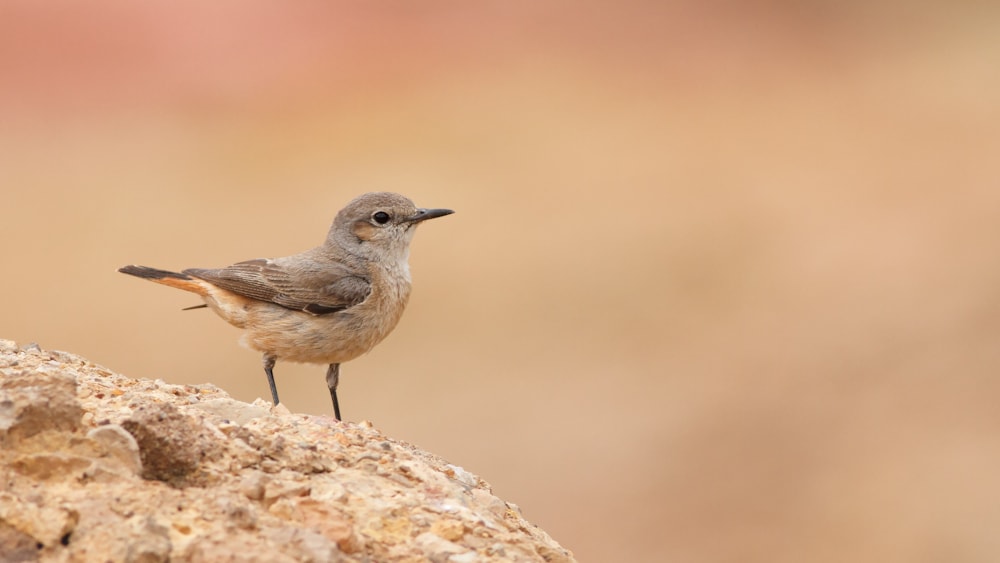
Red-tailed Wheatear's breeding range just about extends into the Western Palearctic, and Azerbaijan is one of few places it can be reliably seen in the region (Josh Jones).
While the scarcer inhabitants undeniably play their part in making Azerbaijan an attractive destination, it is the pristine ecosystems – and the great volume of life that they support – that confirm its appeal. Traditional practices mean that the agricultural lowlands of the coastal south are teeming with birds: Black-headed and Corn Buntings sing from every bush as countless Lesser Grey and Woodchat Shrikes keep watch from the overhead wires and European Rollers lollop around in their vivid ways. Such abundance is something sadly consigned to the history books across intensively farmed western Europe and it is uplifting to see such numbers still persist here.
It's often said that the presence of apex predators symbolises the health of an environment and Azerbaijan is home to thriving populations of Brown Bear, Wolf and even Caucasian Leopard. While the last remains extremely rare, recent camera-trap studies suggest that numbers are on the increase. Catching sight of any of these impressive mammals involves a large slice of luck, but the first two are possible in the right areas – we had great views of a lone Wolf (no pun intended) in the Greater Caucasus one May morning.
Spring alive
The entire nation comes alive in spring. The countryside is in bloom, the temperature is pleasant, returning breeders, adorned in their summer best, join the residents in their droves, with all species at their most conspicuous as they sing and display, driven by the insatiable urge to reproduce. What's more, huge numbers of northbound migrants move through on their way to higher latitudes, where they will soon fill the vast expanses of steppe, taiga and tundra across Siberia.
This concoction of residents, summer migrants and passage visitors ensure that spring (specifically mid-April until early June) produces the highest trip lists. In a two-week spring trip to Azerbaijan and its autonomous enclave of Nakhchivan, which is easily reached via a short internal flight from Baku, a trip list in excess of 250 species is entirely realistic.
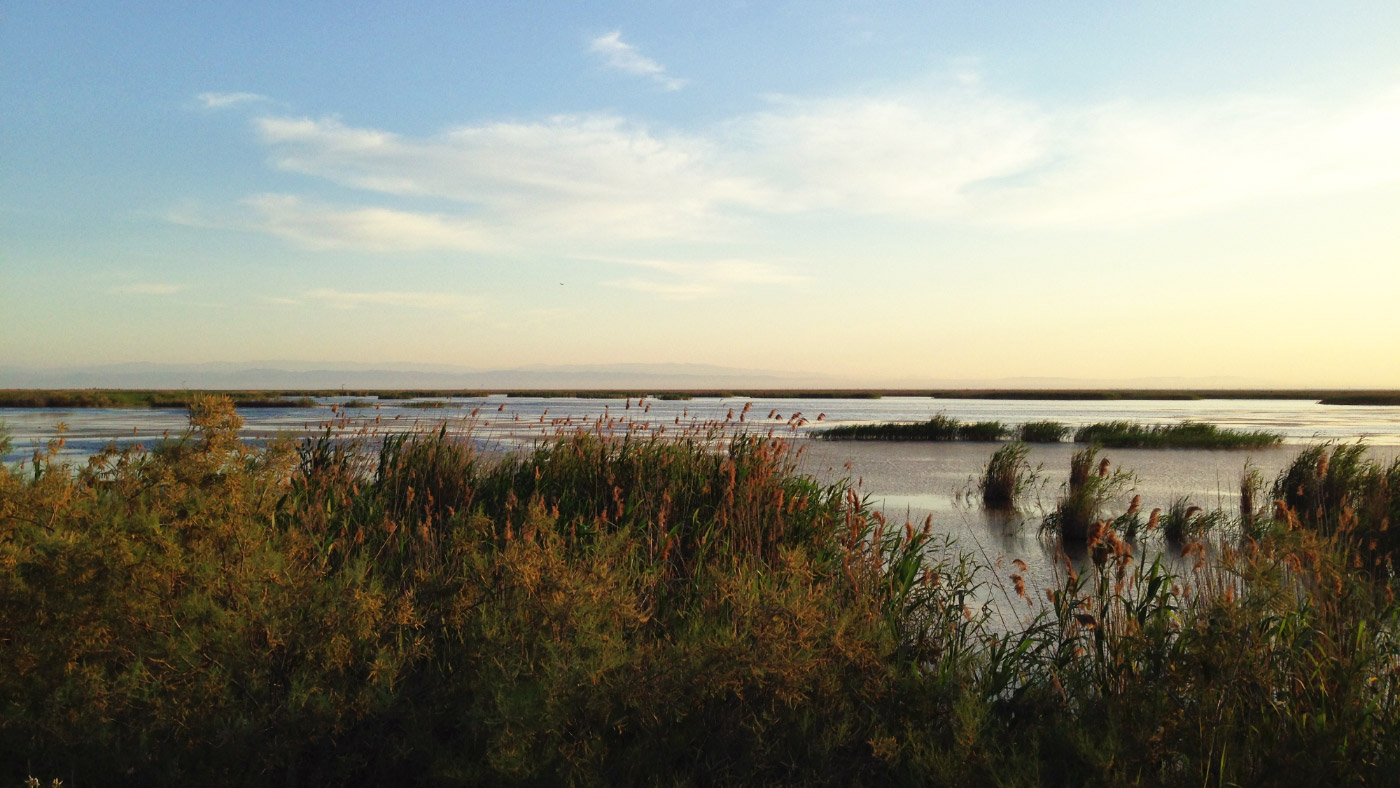
As well as high mountains and lush forests, Azerbaijan also boasts a series of bird-filled marshes along the Caspian coast (Josh Jones).
May is probably the perfect time to visit for the greatest range of species as the last of the winterers still hang on in the early part of the month, while the vast majority of summer visitors will be in and migration will still be conspicuous. Our fortnight-long trip commenced on 3 May 2015, with the relatively early date chosen with the high-mountain specialities of the Greater Caucasus in mind – in theory, snow would still linger at lower altitudes at this time, meaning species such as Güldenstädt's Redstart and Great Rosefinch have not ascended as far as they would later in the month when the snow melts, making them easier to connect with.
This rang true. On our first morning, which dawned clear with a light ground frost, we scored all three of our targets – redstart, rosefinch and Caucasian Snowcock – just below the snowline at 3,000 m, high above the eye-catching hilltop settlement of Khinaliq. Scrambling around slopes at such altitude takes the breath away both physically and metaphorically – rarely does birding in the WP come with such an imposing view. The redstarts were as beautiful as they were large, very much a reflection of their epic surroundings. The eerie, curlew-like wails of the snowcock echoed around us, punctuating a therapeutic silence in this high-mountain domain. There was a curious feeling of peace: nature, going about its business, undisturbed by man. It was special.
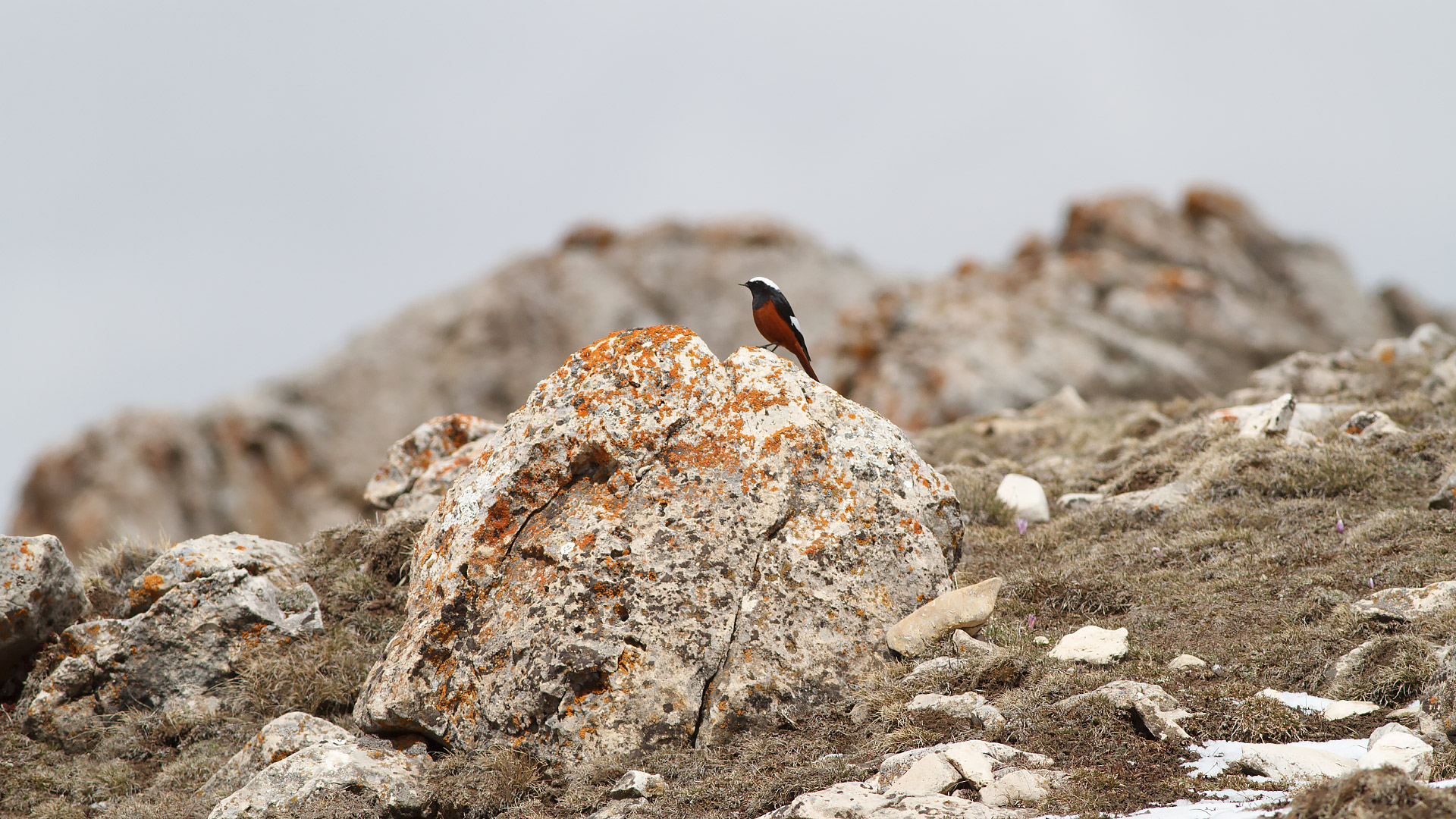
Typical views of a male Güldenstädt's Redstart on the boulder slopes high above Khinaliq (Josh Jones).
The tranquillity was shattered as several snowcock erupted raucously from a crag. A Golden Eagle was cruising above, watching them intently, before taking a half-hearted plunge at one. These majestic birds routinely patrol these slopes, hunting snowcock, while Bearded Vultures also often pass at eye level, ogling back with curiosity. Sometimes these resident raptors are joined by their more transient cousins – we watched Montagu's Harrier and Eastern Imperial Eagle pass to the north as the heat of the day took hold. At this height, it was even more curious to hear the soft prrt of European Bee-eaters well above us.
Warring Wallcreepers
These slopes must be the best place for Güldenstädt's Redstart in the WP. Each day we saw double figures. While searching for them and the other desirables, commoner species such as Alpine Chough, White-winged Snowfinch and the local subspecies of Twite, Horned Lark and Water Pipit littered the slopes. On one memorable occasion, our lunch was interrupted by two territorial Wallcreepers viciously fighting and ultimately ending up soaked in a small meltwater stream.
Where there was vegetation, Red-fronted Serins and Mountain Chiffchaffs sang, while a vigil at a nearby village produced a distant lek of Caucasian Grouse on the high slopes – the males jumping vertically and flapping their wings in comical fashion. Descending further, to where the valleys become forested, the spluttered song of Green Warblers was omnipresent, while both Semicollared and Red-breasted Flycatchers were seen.
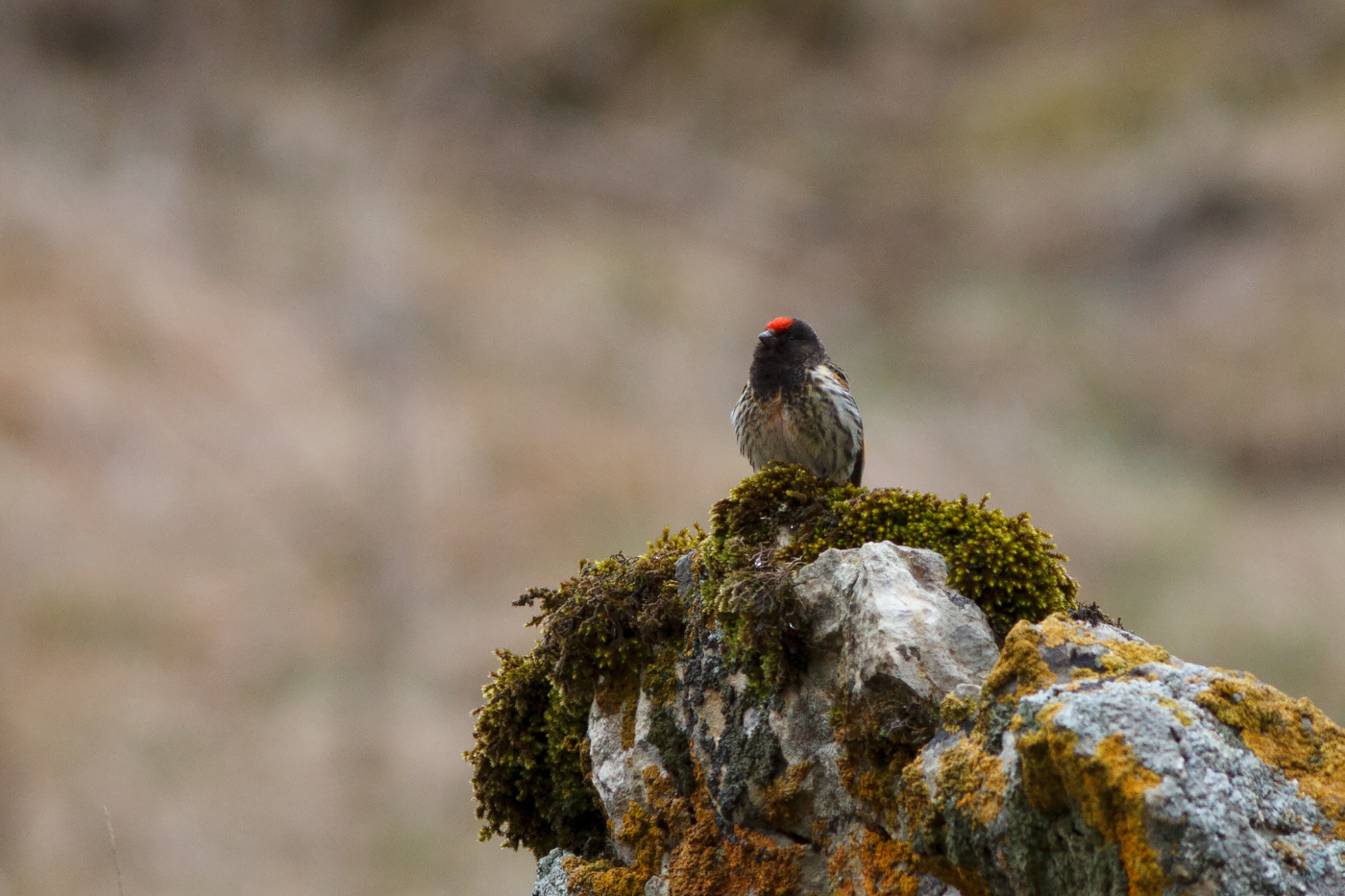
Red-fronted Serin is common in the Greater Caucasus, with males singing conspicuously from rocky perches (Josh Jones).
The Greater Caucasus provides a huge draw for any visitor to Azerbaijan, but it is just one element of many which make it such a memorable birding destination. From Khinaliq, at 2,500 m, it's just a couple of hours' drive to the arid shores of the Caspian Sea, emphasising just how quickly and dramatically landscapes can change here.
Coastal wetlands are dotted along the entire Caspian shore, although arguably none is more impressive than Ghizil-Agaj State Reserve, where a mosaic of expansive lakes, shallow scrapes, reedbeds and scrub draws in a huge variety and number of birds. We had unwittingly timed our visit perfectly for White-winged Tern migration: the skies were replete with them, swirling like a hatch of insects. We estimated in excess of 50,000 present, all in pristine breeding plumage, with a couple of thousand Whiskered Terns thrown in for good measure – jaw-dropping.
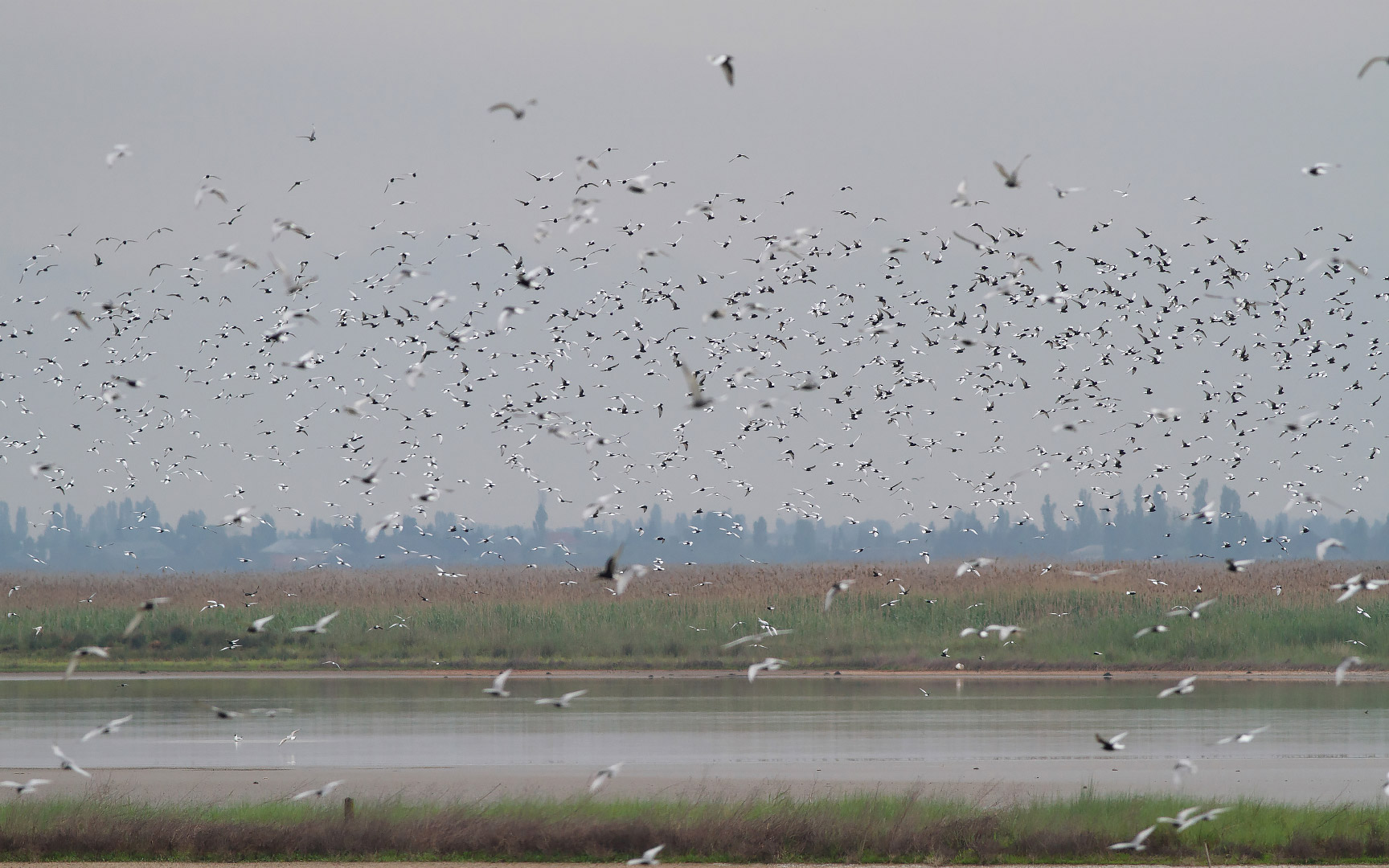
Tens of thousands of White-winged Terns were seen at Gizil-Agach State Reserve on 7 May 2015 (Josh Jones).
Great Reed Warblers belted out their repertoires from every patch of reeds, while the odd Menetries's and Barred Warblers sang from cover. Squacco Herons and Pygmy Cormorants went hurriedly on their ways and Little Bitterns barked, though a handful of dozing Dalmatian Pelicans were rather less sprightly. Another lagoon, to the north, was carpeted in thousands of passage waders: more than 400 frenetic, spinning Red-necked Phalaropes and in excess of 200 Terek and 150 Broad-billed Sandpipers were among the commoner Little Stints and Curlew Sandpipers. Not all were migrants, though – we found several breeding pairs of the terrific White-tailed Lapwing in the vicinity.
Breeding bee-eaters
Then, the highlight. Driving along a dusty track that afternoon, we were suddenly surrounded by Blue-cheeked Bee-eaters. This species is relatively common along the coast and we'd seen ones and twos hunting from wires, but this was different – they were everywhere. Then it became clear why: the track passed right through a colony. They were nesting in the ground, as the dozens of burrows testified, and it was surreal watching these vivid birds scuttling off into the subterranean. We sat and took it in, watching in excess of 100 birds at point-blank range. Highlights such as these come thick and fast along the coast in Azerbaijan – there is such an abundance of exciting species that are rarely found elsewhere in such numbers.
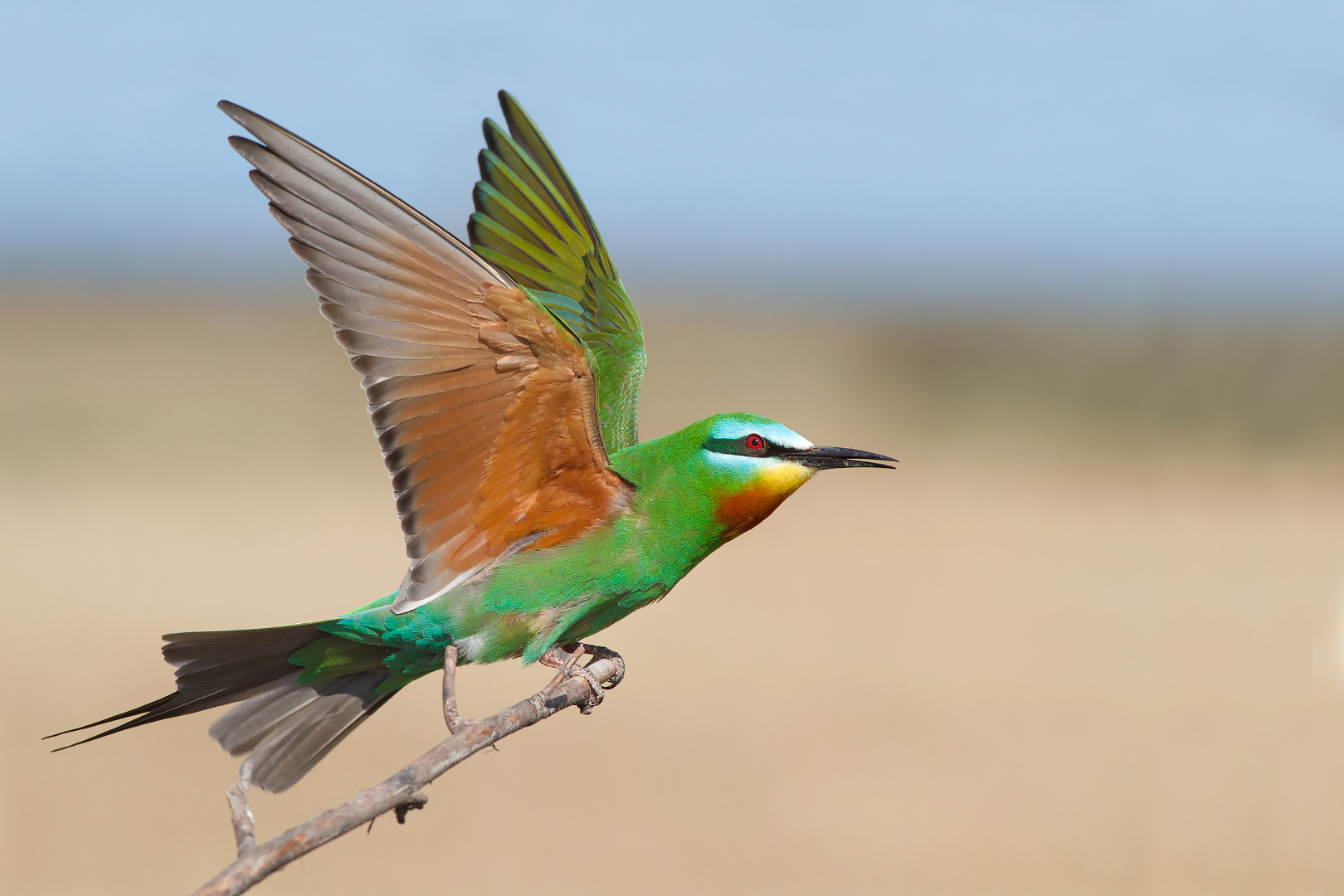
Blue-cheeked Bee-eater is a numerous breeder in the hot and dry lowland areas. This individual was photographed at a colony of hundreds of pairs on the Caspian coast (Josh Jones).
The Lesser Caucasus supports its own list of desirable birds to further pad out the trip list. Via a stop for Shikra in Masalli, a short drive into the Talysh Mountains offers the striking poelzami subspecies of Great Spotted Woodpecker – a good candidate for splitting – while ascending above the forest line produces interesting roadside birds such as Western Rock Nuthatch and Common Rosefinch. Among the fine array of commoner species here, targets include Bimaculated Lark on the plains and Radde's Accentor and Asian Crimson-winged Finch on the higher slopes, all among more beautiful, human-less scenery close to the Iranian border.
The exclave of Nakhchivan, isolated from the 'mainland' following the Armenia-Azerbaijan war of the 1980s, can only be reached by air, but is even more immaculate and uncharted. Flights operate several times daily from Baku and birding in the region gives the chance to see scarcities such as Mongolian Finch, Eastern Rock Nuthatch, Red-tailed Wheatear, Grey-necked Bunting and Upcher's Warbler among delightful rolling landscapes.
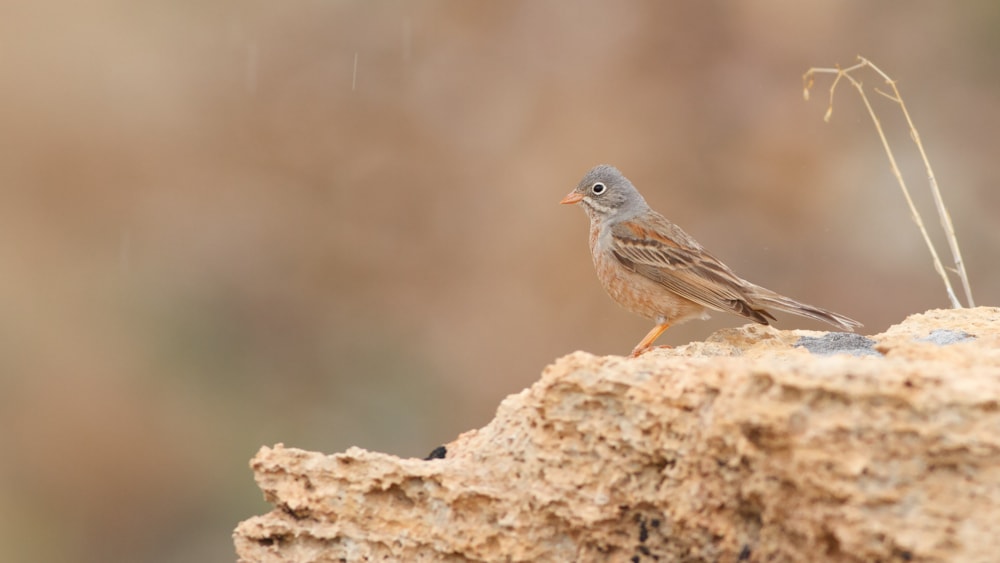
Grey-necked Bunting is one of the numerous exciting species that can be found in Nakhchivan (Josh Jones).
Birds are once again abundant: hordes of Rosy Starlings rove the plains, Pale Rockfinches wheeze from hill-top boulders and Desert Finch was a trip tick for us. Raptors, particularly vultures, are common, and it's easy to see all four European species in a day. It's also worth looking out for Sheltopusik, a metre-long legless lizard, which is numerous.
A spring trip covering the aforementioned areas will already boast a weighty species list on returning to Baku, yet a visit into the country's hot and dry interior as a final port of call will bolster it further. Finsch's and Pied Wheatears are numerous and patches of scrub hold Rufous-tailed Scrub Robin, while patiently searching the shrinking winter pools in this dusty landscape can reveal breeding Ruddy Shelduck and Greater Sand Plover, with the odd Lanner Falcon overhead.
Set amid stunning landscapes, birding in Azerbaijan was easily among the best I've experienced anywhere in the world. Such diversity and abundance were uplifting alone, but with so many top WP ticks and fantastic photo opportunities, plus no huge distances to travel, few destinations offer such a complete package for a rewarding birding holiday than this small Caucasian nation.

Birding on the plains of the Lesser Caucasus – Bimaculated Lark is a key species in this area (Josh Jones).


